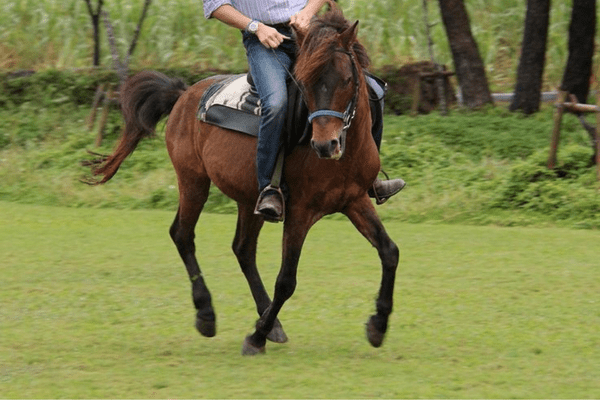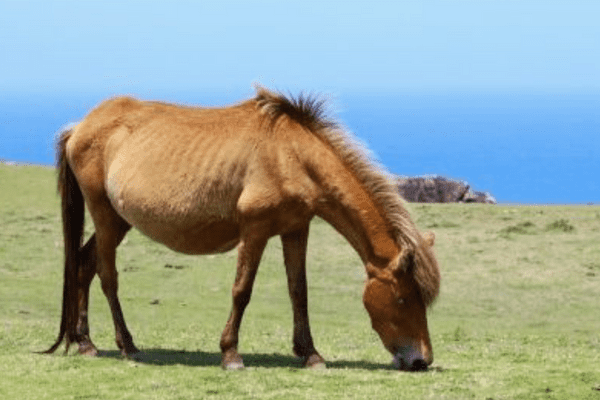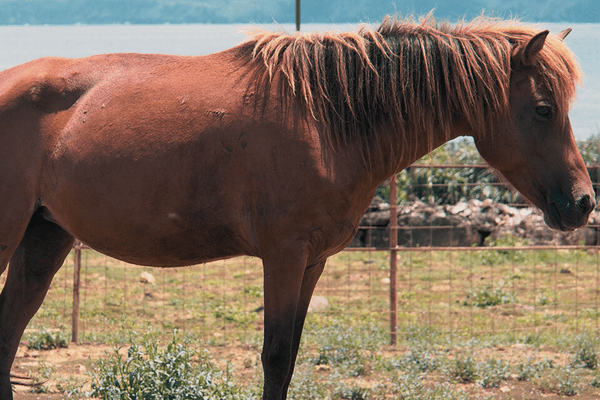Immerse yourself in Japan’s tranquil landscapes and you will discover stories of history, culture, and rare gems aplenty. One such rarity resides within Okinawa Prefecture: the Miyako Pony or as its locals affectionately call it: ‘Miyako uma’ – an iconic breed with roots firmly anchored on Miyako island that stands as an epitome of heritage, resilience, and the urgent call of conservation.
Recently designated Critical by Japanese authorities and designated Critical-Maintained status by Japanese authorities; its journey serves as an emotive testament to how delicately tradition must coexist alongside modernity – join us as we gallop through time tracing this rare equine wonder’s story.
History:
Deep Roots and Beginnings:
An Ancient Lineage: Japan has long been home to beautiful horses, with one particular variety standing out – the Miyako Pony. Historians and enthusiasts trace its lineage back to Mongolian horses – evidence of its endurance and adaptability.
The Turmoil of World War II and Breeding Innovations:
World War II brought massive change, prompting agriculture practices to adapt in response to wartime demands. Larger and more robust farm horses became necessary; breeding practices were developed which interbred Miyako Ponies with larger stallions to create horses with both agility and endurance characteristics.
Golden Era of Population:
1955 – The Year of Abundance: This particular year shimmered as a golden period in the history of the Miyako Pony. The breed reached an impressive count of 10,000, painting a picture of prosperity and prominence across Japan’s farmlands.
Challenges of Modernization:
Changed Agricultural Practices: Post-WWII Japan was transformed by its transition into modernity, which resulted in traditional farming methods becoming less prominent. Thanks to machinery and advanced agriculture technology, roles traditionally occupied by horses such as those belonging to Miyako Pony started diminishing significantly – this change caused significant decreases in their numbers, echoing back melancholically to times gone by.
Conservation: A Beacon of Hope:
1983 – A Wake-Up Call: Conservationists and equine enthusiasts were given an alarming reminder of the Miyako Pony’s precarious condition in 1983 when only 7 individuals could be documented; therefore it became clear that urgent steps must be taken in order to preserve this iconic breed and prevent its disappearance into history.
Resurgence by 1993: Over the next decade, numerous efforts were undertaken to revitalize their population. By 1993, through breeding and conservation campaigns, their numbers saw an impressive surge to 25.
Today’s Precarious Balance:
Treading on Thin Ice: Despite the hard work of many to protect the Miyako Pony’s existence, its survival remains tenuous. Current estimates estimate there may be less than 20 roaming today – proof of their lasting relevance thanks to those committed to its preservation.
Diving into the history and legacy of Miyako Ponies is more than simply understanding an equine breed; it’s about appreciating their complex interweaving of history, culture, innovation and conservation. They serve as a poignant reminder of our collective responsibility to preserve our past legacies.

Physical Characteristics:
The Miyako Pony hailing from Japan’s island terrains boasts an exceptional combination of compactness and strength. Although typically between 10.2 to 11 hands in size (approximately 42-44 inches), their breed exudes strength at every inch – perfect proof that nature designed this breed for their native habitat’s diverse terrains.
Miyako Ponies are beloved breeds known for their varied color palette. Nature seems to have used different brushes on each pony, creating an array of vibrant hues: deep bays, jet blacks, warm chestnuts and elegant grays decorate this breed, adding layers of allure and uniqueness.
Miyako Ponies’ facial features only add to their charm, with expressive head that features a straight profile and wide-set eyes glistening alertness. Their ears always perked up add character as well as hint at their keen senses and intelligence.
This pony’s physique is nothing short of athletic. Despite its smaller stature, its body reveals well-defined muscles indicative of its historical role in labor-intensive tasks. Even its shorter legs feature robust hooves which indicate its adaptability; this build allows the Miyako Pony to navigate rugged terrain on Miyako Islands with grace and stability.
Temperament:
Where the Miyako Pony lacks in size, they make up for it with their distinctive personality and temperament. Renowned for their resilience, intelligence, and gentle nature; historically relied upon to carry heavy loads and complete demanding tasks, their sturdy disposition has proven essential. Yet when interacting with humans they remain calm companions that provide support in both work and leisure situations.

Conservation Efforts:
Miyako Ponies have an illustrious past and significance; yet modernization with machinery and cars have threatened their population and reduced its role on islands where they had once thrived, resulting in decreased numbers. Conservation Efforts
However, their population continues to dwindle despite these efforts of conservation.
Through conservation efforts by local communities and equine enthusiasts, there has been a recent revival in interest for Miyako Ponies. These initiatives seek not only to increase numbers but also reintroduce them to younger generations so their legacy lives on.

